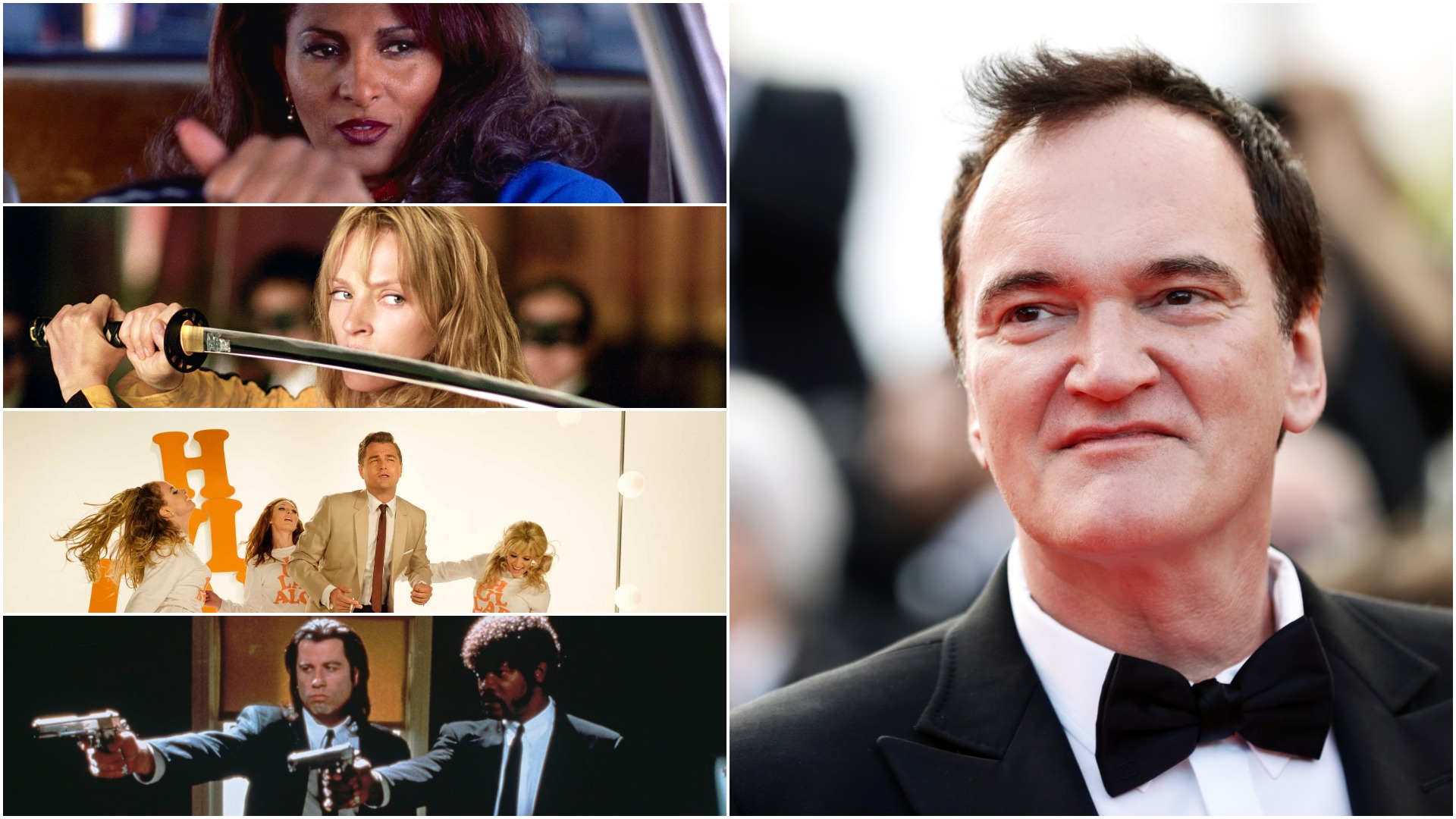(Quentin Tarantino Cultural Imprint)
Quentin Tarantino is a well known film maker that is known for his films to be unpredictable and violent films. He first earned widespread fame for "Pulp Fiction" before directing "Inglorious Bastards" and "Django Unchained" Personally, his films are a cultural classic and entertaining with great memorable dialogue that sparks conversation and are always circling social norms. You're on the edge of your seat and the plot is not predictable, the way the films are made is up to the films are to be interpreted by the audience. The series of all his films are interconnected the films' story line binds together like poetry.
In Pulp Fiction, the main female protagonist played by Uma Thurman is at a restaurant talking to (Vincent Vega) about a story line that overlaps into his future film "Kill Bill" a feisty four group of females that were the fox force five. A blonde woman, the Japanese kung fu master, the french fox and black fox and the bride that handled knives taught by her grandfather and raised by circus performers known as the "deadliest women with knives"
The dialogue throughout the films are so memorable.You can use as much special effects and CGI as you want, if the writing and momentum isn't there in the script and screen play it makes it harder to have a lasting impact on the audience after they see the movie. It's like asking if you remember dialogue from an action packed film like "Transformers" the film is great but I can't reference any dialogue from the film. A memorable scene that sticks with me and is of my favorites is when Jules is threatening the man in the room with his clear persona and dominance in the room while eating a burger and demands answers from his interrogation. "Mhmm this is a tasty burger" you heard the dialogue it sticks. "Say what again, I dare you, say what one more time!" The effect of a good script rare in good screenwriting. Another memorable scene is the cultural reference in France. "What do they call a quarter pounder with cheese?" "A royale with cheese." The humorous and violent filled scene where Marvin is shot in the face in the car and there's blood covered over Vincent. "I just shot Marvin in the face." "Why'd you do that!" "I don't know the gun went off, I didn't mean to shoot him."
A cultural reference that has the detail that is appreciable is when Mia orders a five dollar shake at a restaurant. The detail is how she asks for the shake, "Do you want that shake Martin and Lewis or Amos and Andy. The reference that is pointed are two comedy duos (Dean Martin and Jerry Lewis) and the (Amos n' Andy show) it is a unique way to differentiate a chocolate and vanilla shake. The cost of it is $5 in 1994 which is equivalent to $15 now, the exasperation of the price is expensive for the item which John Travolta asked if there was anything special in it such as bourbon. And you can't forget the pop culture mark the twist which resonates with the former film 8 1/2 in (1963) the dance with inspired by that film and the Aristocrats.
What is known as the Tarantino Zoom is the Dolly Zoom or the vertigo effect is a technique achieved by moving the camera either backward or forward while zooming in and out such a way to keep the subject the same size in frame while the foreground and background compressing or decompressing depending which direction the camera is traveling. The technique originated from "Alfred Hitchcock's film "Vertigo" (1958) This makes the film a more dramatic element intensifying a scene. In the film (Django) when Leonardo Di Caprio's character gets shot and the intensity of the scene builds up zooming on the blood flying around the scene and his servant holding him mourning. The menacing action packed "Kill Bill" films the bride was in a sword battle with her opponents and the camera zooms in on their eyes intensifying the scene.
Food is symbolism with a deeper meaning in Tarantinos films. In "Inglorious Bastards" the strudel and cream shows who controls of Han Landa, controls what she eats and how she eats it. Calvin J is eating a white piece of cake this reveals racism the analogous of the character to the metaphor of the cake. (Django) In Pulp Fiction the way Jules eats his burger without asking shows dominance in the room (Big Kahuna Burger) In Kill Bill the bride struggles to eat rice even with her hands shows she must show strength before she is allowed to eat the rice. Food in the films is essential detail in character development. The food is a larger symbol in the films has a larger meaning than just making you hungry.
Overall the Tarantino films are great storytelling even though the plot isn't always defined and the meaning is up to the audience. There is always intensity good dialogue, writing action packed, and cultural references that have a lasting impact and lead to interesting conversations around the table.

Comments
Post a Comment